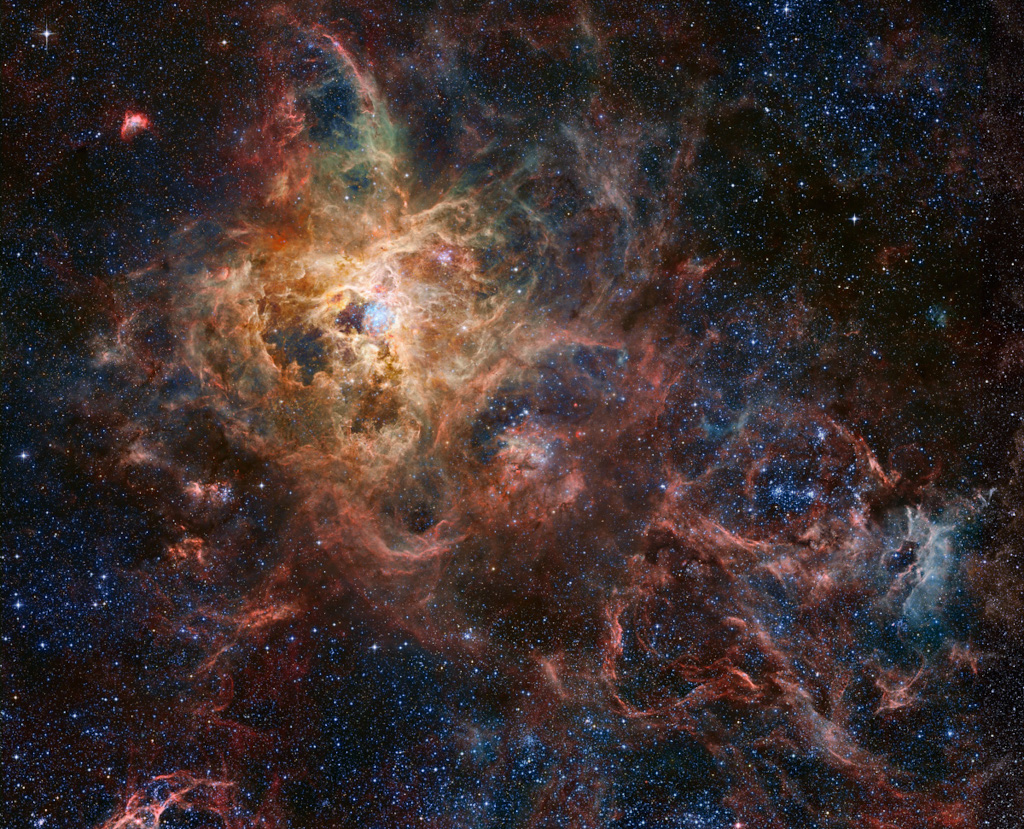안녕하세요, 잡학다식 입니다. 오늘은 과연 나사에서 어떤 방식으로 우주의 형상을 표현해 줄까요?
우선 이미지부터 볼 수 있도록 하겠습니다

해당 사진의 이름은 The Tarantula Zone 인데요 우선 NASA에서 공식적으로 발표한 설명들을 확인해 보겠습니다
The Tarantula Nebula, also known as 30 Doradus, is more than a thousand light-years in diameter, a giant star forming region within nearby satellite galaxy the Large Magellanic Cloud. About 180 thousand light-years away, it's the largest, most violent star forming region known in the whole Local Group of galaxies. The cosmic arachnid sprawls across this magnificent view, an assembly of image data from large space- and ground-based telescopes. Within the Tarantula (NGC 2070), intense radiation, stellar winds, and supernova shocks from the central young cluster of massive stars cataloged as R136 energize the nebular glow and shape the spidery filaments. Around the Tarantula are other star forming regions with young star clusters, filaments, and blown-out bubble-shaped clouds. In fact, the frame includes the site of the closest supernova in modern times, SN 1987A, at lower right. The rich field of view spans about 2 degrees or 4 full moons, in the southern constellation Dorado. But were the Tarantula Nebula closer, say 1,500 light-years distant like the Milky Way's own star forming Orion Nebula, it would take up half the sky.
이번에도 광활한 우주 앞에 인간이 얼마나 작은 존재인지 다시 한번 알게 되는것 같습니다
저는 내일도 더 좋은 사진과 함께 돌아오겠습니다, 그럼 행목한 하루 되시길 바랍니다
'과학상식' 카테고리의 다른 글
| NASA 나사의 오늘의 이미지들 (2022-09-18) (0) | 2022.09.19 |
|---|---|
| NASA 나사의 오늘의 이미지들 (2022-09-17) (0) | 2022.09.18 |
| NASA 나사의 오늘의 이미지들 (2022-09-15) (0) | 2022.09.16 |
| NASA 나사의 오늘의 이미지들 (2022-09-14) (0) | 2022.09.15 |
| NASA 나사의 오늘의 이미지들 (2022-09-13) (0) | 2022.09.14 |